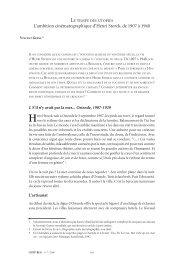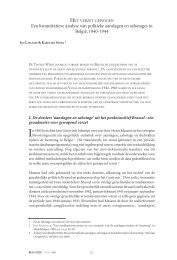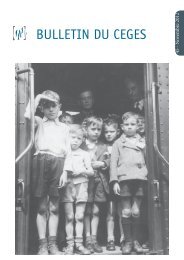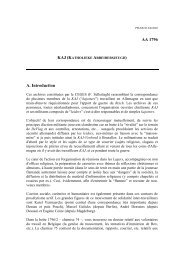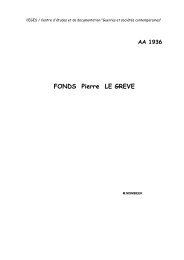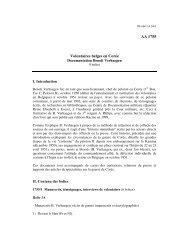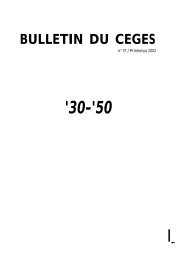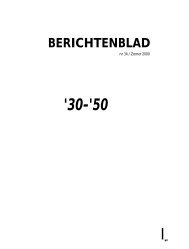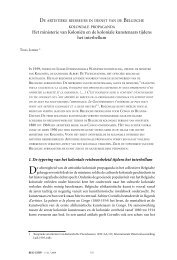Artsen Zonder Grenzen-België, genese van een atypische NGO ...
Artsen Zonder Grenzen-België, genese van een atypische NGO ...
Artsen Zonder Grenzen-België, genese van een atypische NGO ...
Create successful ePaper yourself
Turn your PDF publications into a flip-book with our unique Google optimized e-Paper software.
Samenvattingen / Résumés / Summariesen échange des subsides. Les thèmes officiels favoris étaient les synthèses historicisantessur l’impact de la présence belge au Congo, des portraits et scènes ethnographiquesexotiques et l’exaltation de figures coloniales et d’évènements historiques mémorables.Un aperçu de la politique des bourses de voyage coloniales pendant l’Entre-deuxguerresmontre clairement que le Ministère des colonies a investi dans ce domaineculturel principalement selon un angle d’approche utilitaire et très peu pour des motifsartistiques. De cette manière, les autorités coloniales purent faire jouer un rôle à cetart exotique dans la propagande populaire visuelle moderne en faveur du Congo et duRuanda-Urundi.TESSA LOBBESARTISTIC SCHOLARSHIPS IN THE SERVICE OF BELGIAN COLONIAL PROPAGANDAThe Ministry of the Colonies and Artists during the inter-war PeriodColonial artistic propaganda constitutes an almost entirely forgotten aspect ofthe Belgian colonial past. The central purpose of this article is therefore to studythe collaboration betw<strong>een</strong> Belgian colonial artists and the Ministry of the Coloniesin the context of colonial propaganda in the inter-war period. The term ‘colonialartists’ refers principally to white painters and sculptors who over the course ofthe colonial period from roughly 1880 to 1960 made an artistic expedition to theCongo. From an institutional point of view, this article focuses principally on thepolicy followed by the Ministry of the Colonies in allocating scholarships for suchjourneys.The inter-war period was a crucial one for the institutionalisation of the notionof so-called African art. An initial collaboration betw<strong>een</strong> colonial artists and thecolonial authorities had developed on the eve of the First World War; but it was onlyin the inter-war period that the ministry established a systematic policy of allocatingtravel scholarships. This coincided with a wave of ‘Africanophilia’ within Europeancities. A cultural fascination with a supposedly authentic and intuitive Africa was perceivedas an antidote to the sclerotic rationalism of Western culture. There developedaround an increasing number of African artists an artistic-cultural network whichtook institutional form with the creation of the Association of Colonial Writersand Artists. Through this association an influential network developed within whichcolonial officials such as the Africanophile patron Gaston-Denys Périer and artistscame into contact with each other and encouraged artistic activity. For its part, theMinistry of the Colonies increased its role as a diffuser of propaganda. During theinter-war period, almost all of the political parties as well as the colonial authoritiesgave a good deal of attention to popular visual education as well as to propagandathrough photography, film and art. Thus, democratisation had the consequence that318



